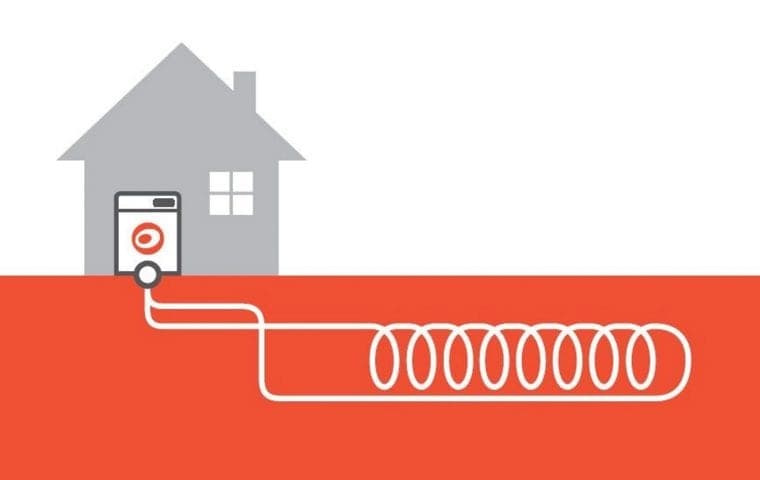Smart Export Guarantee (SEG) & Feed In Tariff (FiT): How to be smarter with your solar exports
- Public and Commercial
- 4 min read
The introduction of the government’s Smart Export Guarantee (SEG) in early 2020, in place of the export feed-in tariff (FIT), may have triggered some hesitation for potential new purchasers of solar photovoltaic panels (PV) up to 5MW.
The SEG’s lack of a minimum price for exported electricity or contract length creates a marketplace for energy firms to compete to offer solar homes the ‘best price’ for unused electricity they export. However, with the SEG requiring only that payments are greater than zero pence at all times of export, and placing the onus on individual companies to set payments and contract terms, Kensa suggests a better financial and environmental solution could be used to maximise onsite electricity use with ground source heat pumps.
Kensa says:
The demise of the Feed In Tariff (FiT) and introduction of the Smart Export Guarantee (SEG) has caused a hiatus of solar PV applications, but this shouldn’t mean lights out on their opportunities. Rather than export surplus electricity, savvy landowners, farmers, and self builders can utilise electricity from on site solar PV, wind, or hydro, to power a ground source heat pump to further reduce energy bills and emissions; rural landowners can diversify to tap into new business opportunities using heat from ground source heat pumps, and developers can significantly cut their carbon compliance costs.
Don’t let your surplus electricity go to waste
Ground source heat pumps are electrically powered devices that harness the natural heat energy freely available from ground or water sources and upgrade this to provide heating and hot water. The technology delivers three times more energy than it uses, making it an  A ground source heat pump can deliver 3 to 4 kilowatts (kW) of heat for every 1 kW of electricity it consumes.What is the Efficiency of a Heat Pump?extremely energy-efficient source of heating, with no combustion, point-of-use emissions nor pollution.
A ground source heat pump can deliver 3 to 4 kilowatts (kW) of heat for every 1 kW of electricity it consumes.What is the Efficiency of a Heat Pump?extremely energy-efficient source of heating, with no combustion, point-of-use emissions nor pollution.
By pairing a ground source heat pump with onsite electric generating technologies such as solar PV, wind, or hydro, many happy Kensa customers are experiencing a holistic and rewarding renewably sourced heating and electricity supply. Indeed, with a typical solar installation costing around £6,000, less than half what it did when the FiT started, then the costs for a self-sufficient self-build start to balance out thanks to the energy savings accumulated from renewably powering the energy-efficient heat pump.
Ground source sows the seeds of new business opportunities
Ground source heat pumps offer rural landowners even more than a low cost, efficient heating solution and a guaranteed income from the government; when combined with existing renewable technologies they can be the catalyst that creates lucrative new business opportunities.
Ground source is easily integrated with battery storage and other electricity-generating renewable technologies. Kensa is urging owners of these systems to consider using a ground source heat pump to turn any surplus electricity into heat energy, instead of letting it go back to the grid.
This 100% sustainable and renewable heat can then also be used to create other income-generating activities, such as commercial drying processes, producing fertiliser from animal waste or rock salt for crisps, or for keeping greenhouses at an ambient temperature.
Case Study:  East Shaftoe FarmCase StudyEast Shaftoe Farm
East Shaftoe FarmCase StudyEast Shaftoe Farm
One arable farm in Northumberland replaced an old oil boiler with a cascaded ground source heat pump system to provide heating to a farmhouse and outbuildings at a much lower cost.
By integrating the ground source heat pump system with the wind turbine and solar panels already on site, 100% of the farm’s energy needs are now supplied by renewable technologies. The owners have also directed some of the heat energy into a hydroponics system, allowing them to effectively diversify their business. (Read the  East Shaftoe FarmCase StudyEast Shaftoe Farm case study here )
East Shaftoe FarmCase StudyEast Shaftoe Farm case study here )
PV and GSHP in zero carbon cities
Go a step further and the value of PV remains substantial in the drive towards ‘zero-carbon cities’, and therefore the associated increasing penalties developers face to ensure carbon compliance.
The impact on developers in London for example who choose to install solar PV alongside ground source heat pumps, instead of gas combi boilers, in addition to the minimum required fabric efficiencies, could equate to a saving in carbon offset funds of as much as £636,300 on a 300 unit development. (Based on a representative 70m2 new build in London with a 4,200kWh heat demand.) (Read Kensa’ blog on how developers can cut the  Future Homes Standard Consultation: Kensa Welcomes Government ResponseNewscost of carbon compliance here).
Future Homes Standard Consultation: Kensa Welcomes Government ResponseNewscost of carbon compliance here).
Indeed, the Greater London Authority (GLA) report, ‘Low Carbon Heat: Heat Pumps In London states:
Energy efficiency reduces demand to the lowest level, heat pumps deliver low carbon heat and PVs play a significant role in offsetting on-site the residual carbon emissions.
Looking ahead to 2030, preliminary analysis indicates that very low levels of total on-site carbon emissions (i.e. approximately 2kgCO2/m2/yr) can be delivered if very high standards of energy efficiency are achieved, an efficient heat pump system is provided and roof-mounted PVs are maximised.
Read Kensa’s response to  Investigating the impact of heat pumps on the electricity gridPress Releasethe GLA report here.
Investigating the impact of heat pumps on the electricity gridPress Releasethe GLA report here.


